Just Moved In and Your Yard Looks Like a Mess? Here’s How to Fix It
Reading time: 6 - minutesYou close the deal on this beautiful house, but the yard…well, it looks like it’ll need a bit of work. Weeds everywhere (all kinds). You’re not sure if the soil’s healthy. The turf is pretty much nonexistent.
No biggie. It’s not a deal breaker.
Now you’re all moved in, and it’s time. Time to get your hands dirty. And you’re crunched for time, because in a few months, it’ll be winter and you won’t be able to get anything done on that yard.
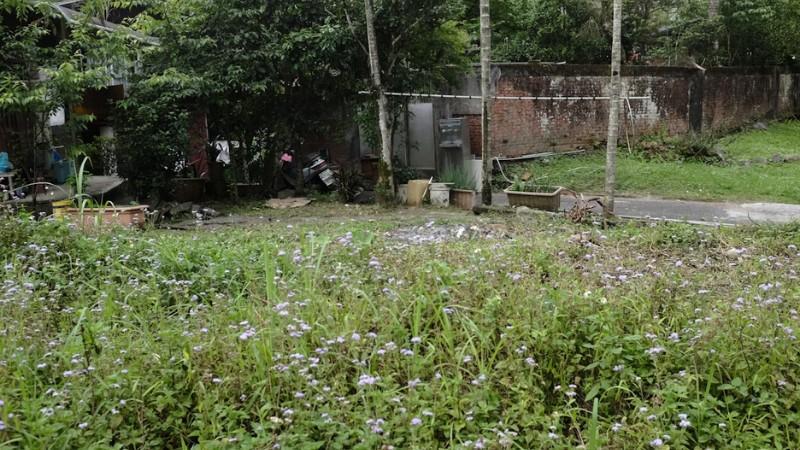
But don’t panic; you’re not stuck with this.
With some lawn care strategies from the pros itself, you may be able to turn things around and turn it into something you’re actually proud of. Now, let’s get to work.
Step 1: Take a Walk. Listen to What Your Lawn’s Actually Telling You
Before you grab the mower, seeds, or fertilizer, hit pause. The first thing you should do is take a slow walk around your yard and see what you’re actually dealing with.
- Start by checking for compacted soil. Does the ground feel hard as a rock? If water just sits on top instead of soaking in, that’s a red flag.
- Dead or brown patches are another common issue, often a sign of underlying soil problems, disease, or past neglect.
- Weed takeovers are easy to spot. If you’re seeing dandelions, clover, or other broadleaf weeds dominating certain areas, those spots will need some targeted attention.
- Don’t forget to check for standing water or soggy low spots, especially after rain. Poor drainage can lead to root rot, fungus, and a whole set of future headaches.
- And finally, take a look at trees or overgrown shrubs. Heavy shade can starve grass of the sunlight it needs to thrive.
Once you know what you’re up against, you can build a plan that actually works, instead of throwing time and money at problems that keep coming back.
Step 2: Clean Up the Debris
Pick up anything that doesn’t belong: old toys, rusted tools, plastic wrappers, forgotten furniture, or leftover construction materials. Check under shrubs, behind sheds, etc. Next, focus on natural debris like fallen branches, rotting leaves, and matted piles of grass clippings.
Next in line are the weeds. This is the tough part. Prioritize pulling weeds from high-visibility areas like flowerbeds, garden borders, walkways, and around your patio.
- Hand-pull when the soil is moist, so you get the roots.
- Use a weeding tool to get those deep-rooted invaders like dandelions.
- For aggressive weed patches, you’re going to need professional weed control service. This is a very important step, and if you skimp out here, you’re looking at a lawn that is overtaken by weeds in spite of your best efforts.
Step 3: Mowing: Don’t Try to “Fix” It All in One Cut
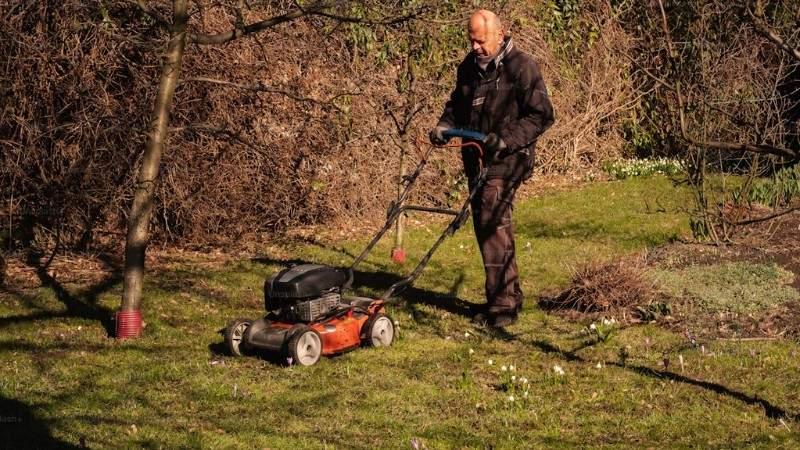
Now, let’s start mowing. Start with sharp mower blades (dull blades tear the grass instead of cutting it cleanly) and set your mowing height on the higher side, around 2.5 to 3 inches. Taller grass helps shade the soil, keeps moisture from evaporating too quickly, and most importantly, gives your grass a better chance to bounce back.
Short mowing might look tidy for a day or two, but it exposes weak roots, invites weeds, and leaves your lawn vulnerable to heat and drought. Focus on frequency and consistency instead. A regular mowing schedule, cutting only about one-third of the grass blade each time, allows your lawn to strengthen gradually.
Bonus tip: Keep checking that lawn for weeds. Depending on the time of year, you may see 2–5 popping up every other day. Keep removing them.
Step 4: Check Your Soil
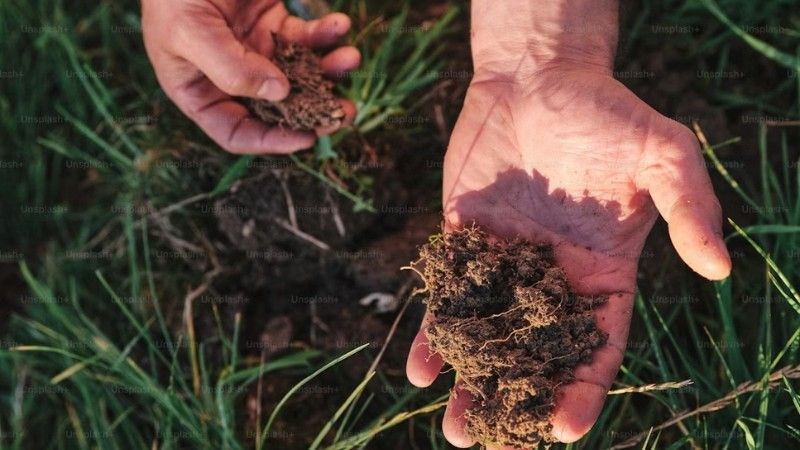
After years of neglect (or even just one tough season), your yard’s soil is likely compacted. It’s hard, dense, and unwilling to let air, water, or nutrients reach the roots. That’s where aeration comes in.
Here’s what aeration does:
- Loosens compacted soil so roots can spread and breathe
- Improves water absorption (less runoff, more soaking in)
- Boosts nutrient uptake by getting fertilizers down to the root zone
- Stimulates new root growth for a thicker, healthier lawn
- Helps break down thatch build-up that can weaken your grass
For new homeowners dealing with an unmanaged lawn, core aeration (pulling small plugs from the soil) is your best bet. Ideally, schedule aeration in early spring or fall when the grass is actively growing and can recover quickly.
But what happens if your soil isn’t healthy to begin with?
Here are some signs of poor soil health:
- Grass that stays thin and weak, even with regular care
- Bare patches that keep returning
- Dry, lifeless soil that falls apart or turns to dust is a red flag. Healthy soil should be slightly moist and crumbly like chocolate cake.
- Lack of earthworms or insects. Dig a small hole. If you see little to no bug life, your soil might be too dry, acidic, or lacking organic matter.
If that’s the case for you, the better option may be our SoilBooster™ treatment. It’s not a fertilizer; it’s a liquid soil amendment that helps rebuild your soil’s foundation. It boosts microbial activity, unlocks trapped nutrients, and improves water retention, helping roots access moisture more efficiently.
Read more about soil health in our blog, tips to rebuild healthy soil.
Step 5: Fertilize to Jumpstart Recovery
Once you’ve “aired out” the soil, it’s time to feed your lawn. Many neglected yards are nutrient-starved, which leaves the turf weak and weeds thriving.
What your lawn needs:
- Balanced fertilizer
- Slow-release formulas that deliver nutrients over time, preventing burn.
- You have to time it right. Early spring fertilization is best for growth. Early fall for root strength heading into winter. Best to avoid fertilizing during extreme heat.
Step 6: Seed or Overseed the Lawn
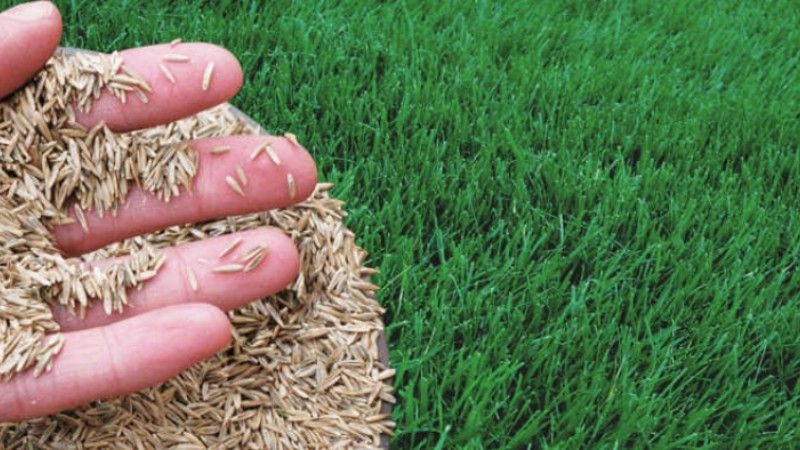
Since you’re dealing with a neglected lawn, you’re either looking at no turf or bare patches.
Bare patches are easier because your option is simply to overseed. But in case of no turf, you’re starting from scratch. That means seeding and then overseeding after some time.
Now let’s say you have some turf; the next thing to consider is should you overseed or just start fresh with sod?
Overseeding
- Cost-effective and much cheaper than sod
- Great for filling in thin or patchy areas
- Helps improve density over time
- Takes patience; results build gradually over a few months
Sodding
- Instant results. You get a full, green lawn right away
- Higher upfront cost for materials and installation
- Ideal for severely damaged lawns or where you need fast results
For most new homeowners, a combo of aeration + overseeding gives the best balance of cost, results, and long-term success. You strengthen the soil while filling in weak spots, and your lawn starts rebuilding from the ground up.
Spring and early fall are ideal for both overseeding and sodding. Cooler temps and consistent moisture help new grass establish strong roots.
Step 7: Refresh the Look

Building a healthy lawn takes time. But if you want your yard to look better right now, a few simple fixes can go a long way.
Quick wins that make a big difference:
- Mulch flower beds: Instant colour, clean edges, and weed suppression all in one
- Trim overgrown shrubs and trees: This opens up sightlines and allows more sunlight for your grass
- Edge along driveways, walkways, and garden beds: Clean borders make everything feel sharper and more cared-for
- Pressure wash hardscapes: Brighten up patios, sidewalks, and driveways in an afternoon
Step 8: Create a Maintenance Plan
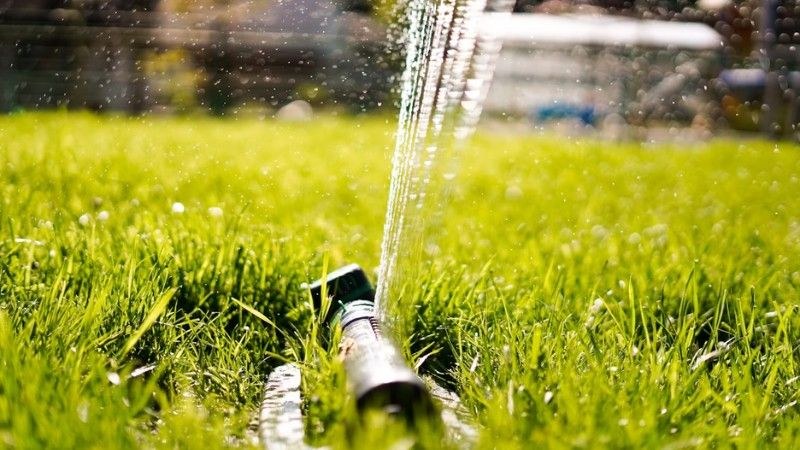
Now that your yard is finally looking like a place you’d want to spend time in, don’t let it backslide into chaos again. Remember, it’s all about maintenance. Over time, you’ll realize it gets easier as your lawn gets healthier and needs less 1:1.
Pencil in 20–30 minutes a week to handle the basics:
- Mow the lawn regularly (once a week during peak growing season)
- Pull weeds before they spread or go to seed
- Water early mornings, deeply, and only when needed
And don’t forget to invest in basic tools. A few quality tools can save you time (and your back):
- Lawn mower or string trimmer
- Rake, shovel, and hand weeder
- Hose and watering wand
- Garden gloves and a kneeling pad
Your New Lawn Doesn’t Have to Stay a Project Forever
A rough-looking yard can feel overwhelming when you first move in, but it doesn’t have to stay that way.
We can take your lawn from this:
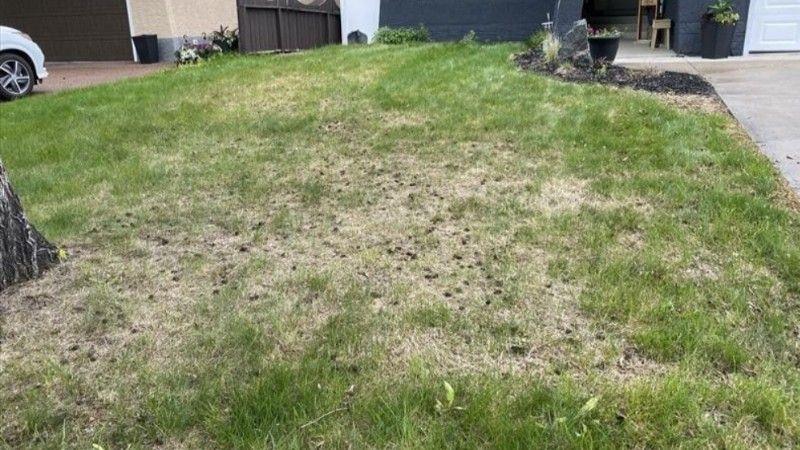
To this…
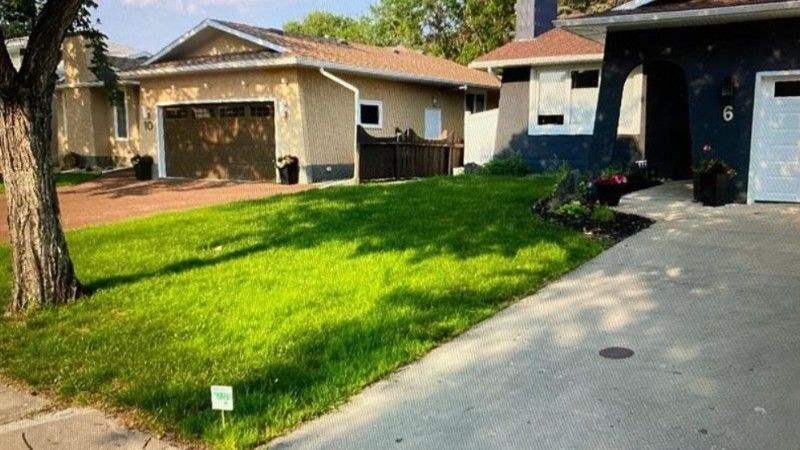
And we can do it for your lawn too.
With the right mix of aeration, fertilization, weed control, overseeding, and soil care, your lawn can turn around faster than you think.
And you don’t have to tackle it alone. Whether you’re in Winnipeg, Calgary, Red Deer, Edmonton, Saskatoon, or Regina, our lawn care programs are designed to simplify the process for you.
Book your free lawn assessment today and let’s get your new yard headed in the right direction!

